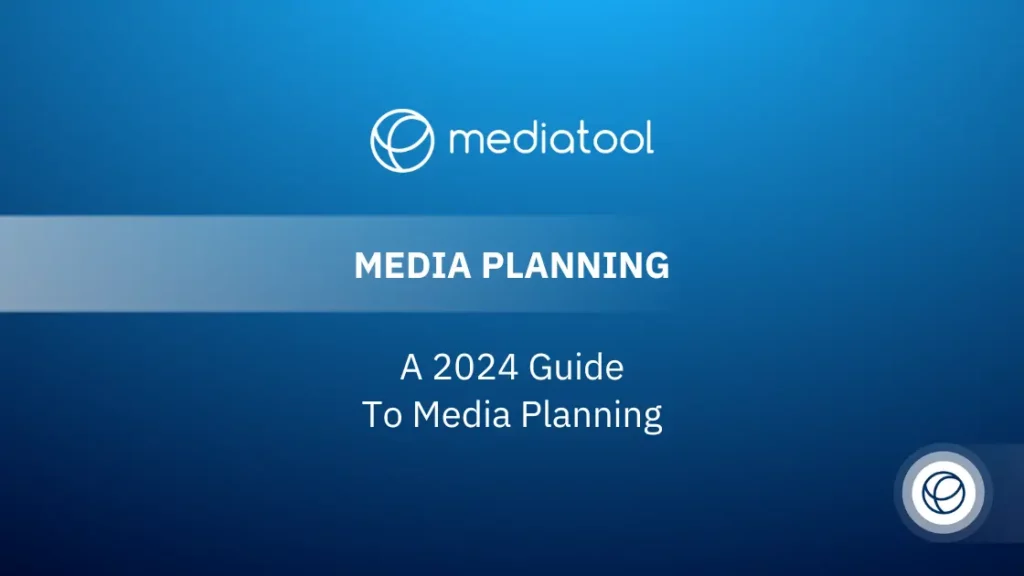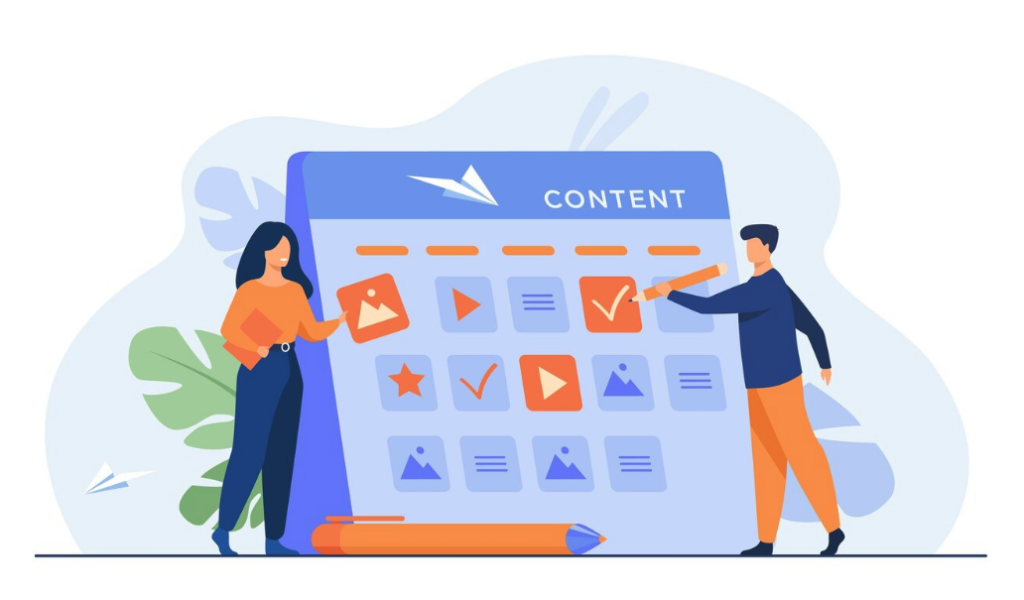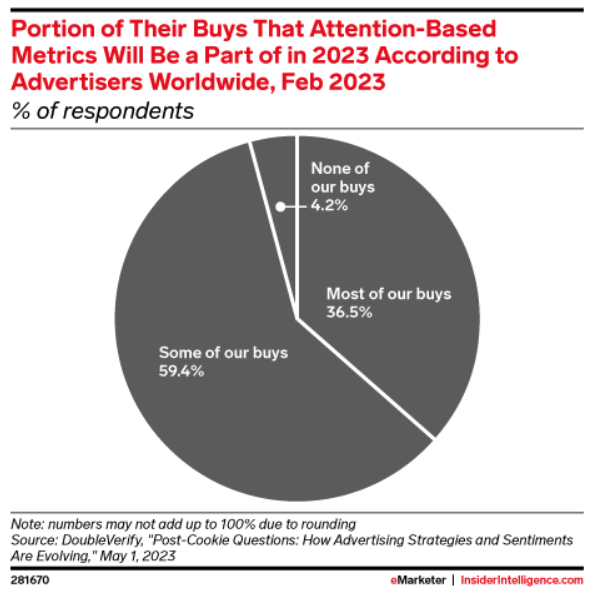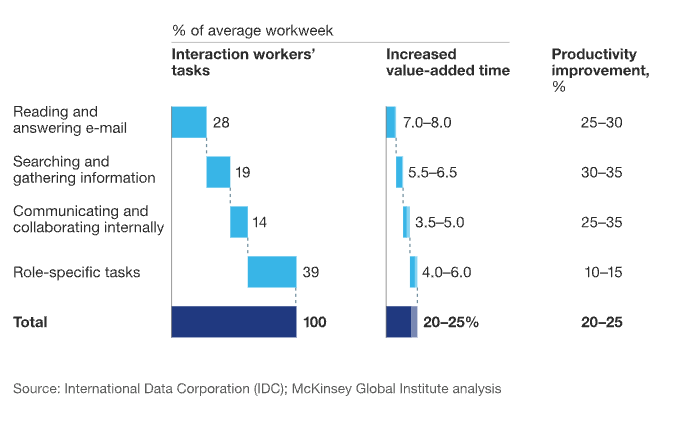

In this guide, we dive into media planning and buying. We’ll cover the basics, include a step-by-step guide to modern media planning, and touch on media planning trends for 2024 and beyond.
Whether you’re an in-house marketer or an agency media planner, adopting a data-driven digital marketing approach is crucial. Intuition will only get you so far.
But you can’t do away with the human touch entirely.
In an era of personalization at scale, non-linear customer journeys, and heightened online activity, your digital marketing must adapt to mirror consumers’ ever-evolving needs.
That means understanding your audience and meeting them on their home turf.
If you’re looking for better ways to drive traffic, generate leads, and deliver more ROI, start by leaving the old tactics behind.
Let’s get started.

Media planning involves the strategic selection and evaluation of media channels and platforms to effectively reach a specific target audience. Its main goal is to ensure a brand’s message reaches the right people at the opportune moment, delivering impactful communication.
A media channel is a broad media class or medium used to deliver advertising messages to prospective customers.
Traditional Media Channels
Digital Media Channels
These days, media planners need to cover an array of traditional and digital channels to reach their audience.
A media vehicle refers to a specific channel advertisers employ to get their message out. It could be a page in a local newspaper, a website with a similar audience, or a LinkedIn remarketing ad.
Media planners will pick a mix of different media platforms and vehicles to reach a target consumer group on multiple occasions. The right mix will hopefully influence their perception of – and interest in – a product or service.
Media planners need to establish a clear target audience to get the most bang from limited marketing bucks. Then they can strategize which channels would be most effective. The next step is determining the media vehicles, content types, and engagement frequency to garner the best results for marketing objectives.
When planners talk about ‘selecting the right media mix’, they refer to picking the most effective combination of media based on their audience’s behavior and preferences, and the likelihood they’ll convert.
As you might expect, these decisions involve a lot of data. There’s also some trial and error – and we can’t ignore the value of a media planner’s experience.
How is media planning different from media buying? Although the two processes often get lumped together, media planners and media buyers play distinctly different roles in launching campaigns.
Let’s look at the main differences between media planning and buying, and how both sides work together to deliver the best results.
Media planners determine how, where, when, and why a business will distribute content to drive ROI through paid advertising.
A media planner is responsible for developing a coordinated media plan based on the goals outlined in an organization’s marketing strategy.
In short, media planners take care of all the behind-the-scenes intel required for a successful integrated marketing campaign.
Media buying is the other side of the advertising coin. Media buying refers to the process of securing media space, be it a timeslot, ad space or endorsement.
Media buyers have an intimate understanding of the marketplace and a long list of contacts/relationships with media vendors built over their careers.
Buyers are planners’ operational counterparts. There is some overlap when it comes to optimizing campaigns; planners and buyers work together to adjust the tactics so they make the best use of the budget.

Your Step-by-Step Guide to Modern Media Planning
Digital marketers are under increasing pressure to deliver results. But when everything changes so fast, how can you hope to keep up with the competition, let alone get ahead?
Remember that old maxim, “the more things change, the more they stay the same”?
Marketing is always changing. Media planners who balance tried-and-true expertise with data-driven insight will be ideally positioned to navigate whatever challenges come along. Follow these 6 steps to create a strong, agile, and effective media campaign and strategy.
A target audience is a group of people you identify as potential customers based on age, occupation, location, interests, gender, or other factors.
Use what you know about your audience to build an ideal customer profile (ICP) or audience personas.
Let’s say you have a business that sells eco-friendly baby products. Right away, you can define three broad audiences: new parents, grandparents, and friends of new parents.
(There’s not much point targeting high school students or their middle-aged parents with ads for expensive prams).
Now use demographic, economic, psychographic, and geographic data to get closer to your intended audience. The tighter you can make your audience segments, the more targeted your marketing will be. But don’t focus too tightly, or you might end up with segments that are too small to reach your goals.
The audience segments for our eco-friendly baby products might look like this:
You can’t measure campaign performance if you don’t know what success looks like.
Are you aiming for brand awareness or trying to generate sales? What are your daily, weekly, monthly, or quarterly revenue targets? How is this media plan linked to company growth?
Starting with clear goals and ambitious KPIs helps media planners select the right mix of media channels and messages.
Let’s stay with our eco-friendly baby product company and assume we are launching a new clothing line for Christmas. Brand awareness is good, but the main aim is to sell products. Right away, we define success in terms of revenue – but let’s go further.
Last Christmas, we sold $30,000 worth of products from a $6,000 campaign. This year we’re aiming for a 25% increase. But times are tight, and our budget has been cut by 10%. We’ll need to improve ROAS to reach our goals. Calculate your ROAS with our ROAS Calculator.
As an eco-friendly company, loyalty is important. So we want at least 20% of sales to come from returning customers.
Using these goals, we can put some KPIs in place:
Now we have campaign goals that connect with our target audiences and link to the company’s growth aspirations. It’s clear we will need an aggressive marketing strategy with some clever tactics to re-engage past customers.
How are we going to pull it off?
A quick note before we continue: Media planners don’t act alone. Steps 1 and 2, as well as the broader marketing strategy that came before, are collaborative exercises involving many stakeholders.
Market research will always turn up insights that will inform our advertising strategy and guide tactical decisions.
Media planners undertake two types of market research; internal and external.
Working closely with a brand’s key stakeholders to understand the growth objectives and marketing goals. Most internal research will, realistically, occur in steps 1 and 2.
In this stage, a media planner will gather and analyze insights about the competitive landscape and marketplace:
For example, we might learn that TikTok advertising is our biggest opportunity to find new customers, email marketing is effective for past customers, and our biggest competitors are selling eco-friendly baby toys instead of clothing.
The plethora of channels available to media planners is dizzying, so it’s essential to choose the most effective mix for your audience.
Armed with market research and goal-setting insights, marketers must determine which channels media strategies can bring them the most success.
Media planners typically use a targeted mix of offline and other online media channels.
The mix for our eco-friendly baby clothing company will look a little different for each audience segment.
Audiences 1 and 3 (new parents and their friends)
Audience 2 (new grandparents)
(Note that this mix excludes below-the-line channels like email, PR, SEO, and word-of-mouth marketing. The media planning is a significant part of the comprehensive channel plan, but not the entire thing).
Mediatool’s collaborative planning features make it easy for large teams and advertising agencies to create, share, approve and amend media plans. You never need to worry about working on the wrong version, losing documents, or missing a memo with Mediatool’s media planning templates and tools.
Reach refers to how many people will see your ads, while frequency determines how often.
The goal here is to find the balance between maximizing ad visibility and optimizing spend. We want our ads to be noticed but not to the point where they become annoying. We also don’t want to overspend on ineffective channels.
There are three main approaches to consider when deciding on ad frequency:
A handy rule of thumb is that ad creative needs to be seen three times to be memorable. However, each media channel has its own considerations.
In our case, we can use what we know about our audience segments, combined with the channel plan, to decide on a “Flighting” approach for the Christmas campaign. We want to make a big impression quickly, so we can sell a lot of clothes in 10 weeks.
By now, you should see how all these considerations are cumulative. Each step influences the next, and success depends on a cohesive and collaborative media planning process.
Media buying is all about negotiations and getting bang for buck.
Media buying is primarily the realm of the media buyer (no surprises there). But, as with anything in the world of media planning and digital marketing, there’s room for collaboration.
Effective media buying means using the least budget to achieve the most impact and support the marketing strategy in the best way.
Automation tools haven’t completely done away with the need to directly manage media vendor relationships. Media buyers should still invest in building relationships with ad vendors.
If the media buyer has done their homework and built solid relationships, they should be able to negotiate preferential rates for large platforms.
A large chunk of any digital marketing budget will go to online media platforms, like social media and search. Media planners and buyers should collaborate to optimize spend according to the media mix and frequency.
Create an attribution framework and continuously monitor campaign performance in each channel.
As soon as your media plan is live, you can start to look for optimization opportunities. Despite exhaustive research, extensive planning, and years of experience, you can’t predict your audience’s behavior with 100% accuracy.
The key to tracking and optimizing media plans in real time is a centralized dashboard that provides a comprehensive overview of all marketing activity.
Target indicators, visual reports and user-friendly dashboards make tracking campaign performance easier for marketers and media planners. A single dashboard with multi-source data ensures media buyers have all the information they need to optimize campaigns, rearrange budgets, and make more informed decisions for future plans.
With Mediatool’s customizable dashboards and reporting capabilities, advertisers and agencies get a holistic view of all their campaigns in one central location. Real-time data integrations ensure you get an up-to-date feed of campaign performance and can quickly make well-informed decisions to adjust, pause and optimize campaigns from a single account.

The complexity of media planning and buying continues to escalate into 2024, further amplified by ongoing global challenges such as data privacy concerns, economic shifts, and the evolving digital landscape.
The post-COVID-19 era has seen a permanent shift in consumer habits, with an increased preference for online interactions and e-commerce, even for traditionally in-store purchases. This change spans across sectors, with significant impacts in areas like home furnishings, appliances, and healthcare products, including over-the-counter medicine.
For B2B marketers, the shift towards digital interaction remains a steadfast trend, now solidified as a standard practice. The emphasis on leveraging real-time data for actionable insights has become even more crucial. Marketers are increasingly relying on attention-based metrics to gauge the effectiveness of their campaigns. As reported by Insider Intelligence, nearly 96% of advertisers worldwide are now incorporating these metrics into their media strategies, focusing not just on ad viewability but on how much consumer attention the ads capture.

Shift Towards Product Placement: In response to advertisement fatigue, particularly among high-income consumers, Gartner predicts that by 2024, 70% of brands will reallocate at least 10% of their media budget to product placement within entertainment content. This move towards product placement and sponsored content is seen as a more effective way to engage audiences who are increasingly tuning out traditional digital ads.
As we move further into 2024, media planners are tasked with adapting to these evolving trends, requiring agile strategies that respond to the dynamic digital marketplace. The integration of advanced data analytics and a nuanced understanding of consumer behavior continue to be at the forefront of effective media planning.
If you work in marketing or media, you have undoubtedly heard about the data privacy changes affecting advertising. With Google phasing out support for third-party cookies, GDPR/CCPA legislation putting a halt to shady practices, and Apple limiting third-party tracking on their devices, the power of data is in consumers’ hands.
A lot of marketers worry that the changes will erode their ability to target prospective customers. But that’s not the case at all.
Data tracking isn’t disappearing. It’s evolving.
By adopting a first-party data strategy, media planners can get closer to their ideal audiences and garner deeper insights for a 360° customer profile.
Most media planners have more than enough first-party data in their warehouse. The challenge isn’t collecting more data but being strategic about where, how, and why the data is collected.
While digital marketing has always been touted to enable more speed, agility and transparency, its potential has hardly been tapped to date. Gartner’s research indicates a significant decline in the productivity of technology investments in marketing. The data reveals that the utilization rates of these investments have decreased from 58% in 2020 to a record low of 42% in 2022.

The last few years have left no room for gut-driven strategies and over-complicated decision-making processes. In fact, decisions that used to take days or even weeks are now being made in hours.
Your marketing team can tighten the feedback loop with:
As a result, media planning is more grounded and less concerned with gloss and polish.
With strained marketing budgets and increased pressure to deliver results, tracking campaign performance became a top concern of marketing teams. While in years past, marketers might have enjoyed wiggle room to iterate, test and experiment based on hunches, there is no longer any tolerance for misdirected marketing.
Advertisers are looking for tactics that have a high probability of succeeding. It’s more important than ever for media planners to have the right tools to track and evaluate campaigns in real-time, so they can unearth insights and adjust as needed.
One of the biggest drivers at Mediatool has always been to simplify the digital marketing journey from idea to attribution. And over the past years, we’ve witnessed a tremendous increase in demand for a more agile, end-to-end approach to managing digital media planning and marketing campaigns.
Lack of reporting transparency and a sense of urgency can have substantial opportunity costs. Mediatool is an investment in high-quality data collected from all your marketing channels and delivered with real-time target tracking.
In the past, there was a perception that stretching the marketing budget as wide as possible would generate ROI.
In times of unprecedented uncertainty, business leaders look to decrease risk. Every dollar spent has to drive immediate results, which presents significant challenges for marketing teams.
Ad spending is rising after a dip in 2020, but the landscape isn’t like it was. Advertisers are pulling back from brand awareness campaigns and redeploying their resources into channels and tactics that are easier to track, measure and report on in real-time.
Does that mean brand campaigns will become a thing of the past? Not necessarily. The close scrutiny of marketing budgets is driving media teams to reconsider their revenue-generating approach. It’s part of a broader perception shift, with marketing going from a cost centre to a revenue generator.
Media planners are being more thoughtful about where, when and why they deploy brand campaigns will help marketers to maximize their impact moving forward.
When it comes to optimizing a multi-channel customer experience, it’s essential to have the most accurate and up-to-date information about your target audience, preferably in one neat dashboard. Then, you can use data to drive your tactics instead of relying on personal hunches.
While some trends have arrived sooner than expected, don’t throw out your media planning playbook just yet. Instead, update your approach to be more data-driven, collaborative, and agile.
Uncovering emerging trends early allows you to act in time and be part of the conversation. More importantly, it provides much-needed context for tailored ad creative and more engaging copy.
With the right tools, good marketing data, and a clear media strategy now, any experienced media planner can tap into real-time consumer intent. The fundamentals of media planning haven’t changed. They’ve simply evolved.
Media planners who can identify trends within their audience segments, create tailored content, and deliver relevant customer experiences will gain a competitive edge.
Digital advertising campaigns require a great deal of communication, fine-tuning and cross-functional collaboration. According to a McKinsey study, knowledge workers spend around 28% of the work week managing their email. Another 19% is spent searching for internal information or tracking down colleagues who can help with specific tasks

The study suggests that businesses can raise productivity by 20 to 25% by adopting the right social technologies.
Effective collaboration is trickier as remote working becomes normalized and teams are increasingly geographically diverse. Teams that had the right tech stack (or pivoted at the right time) do well during uncertainty, while others struggle to adapt and deploy campaigns in time. A survey by NewsCred found that organizations using planning and project management tools faced fewer challenges as a result of COVID-19 compared to those that didn’t use any tools.
The first step towards streamlining your marketing team’s collaboration is understanding the productivity and communication tools needed to keep projects moving forward.
The secret is finding one or two platforms that can do it all. Bringing in too many new tools might end up being more disruptive than having no communications infrastructure at all, so invest wisely.
With the economic uncertainty of 2023, marketers may encounter budget cuts as financial teams aim to conserve cash flow. Rather than indiscriminate reductions, it’s prudent to make strategic cuts in the media planning process, focusing on the most effective channels and content for your target audience.
In managing budget restrictions, consider these approaches:
Incorporating these principles into your media planning strategy ensures a balanced, data-driven approach to adapting to budget limitations, maximizing the potential of available resources.
One thing is clear – media planners need to get comfortable with discomfort. If you want to stay ahead of the curve, you need to:
But don’t throw out the old playbook just yet. Things have certainly changed, but the fundamentals of media planning remain intact.
With media strategy, people, processes and systems working together, brands and agencies are bound to emerge on the other side unscathed, if not re-energized.
Meet Mediatool, the architect behind this guide. We offer a cloud-based platform tailored for managing and strategizing marketing campaigns.
Mediatool empowers brands and agencies in media buying, media planning, and digital advertising by providing tools for tracking, optimizing, and visualizing marketing efforts.
Our platform enhances efficiency with total budget control and seamless data integration, enabling you to craft and refine your media strategy effectively. With Mediatool, gain a holistic view of all marketing activities, including social media, digital platforms, and traditional channels, to elevate your media mix and achieve your marketing objectives with data-driven precision.
Harness the full potential of your marketing team with Mediatool. Our platform streamlines the media planning process, enabling media buyers and planners to conduct market research, develop comprehensive media plans, and monitor key performance indicators across various media platforms.
Whether it’s optimizing paid media campaigns, generating engaging content for social media posts, or aligning advertising strategies with broader marketing campaigns, Mediatool offers the tools necessary for success.
Our focus on digital media planning and analytics empowers teams to create targeted advertising messages and strategies, ensuring that every media buy is cost-effective and aligned with your brand’s campaign goals and target audiences.